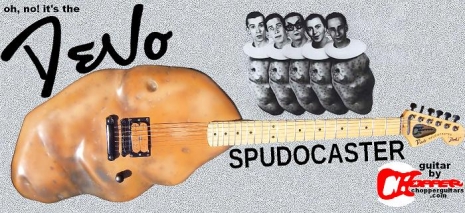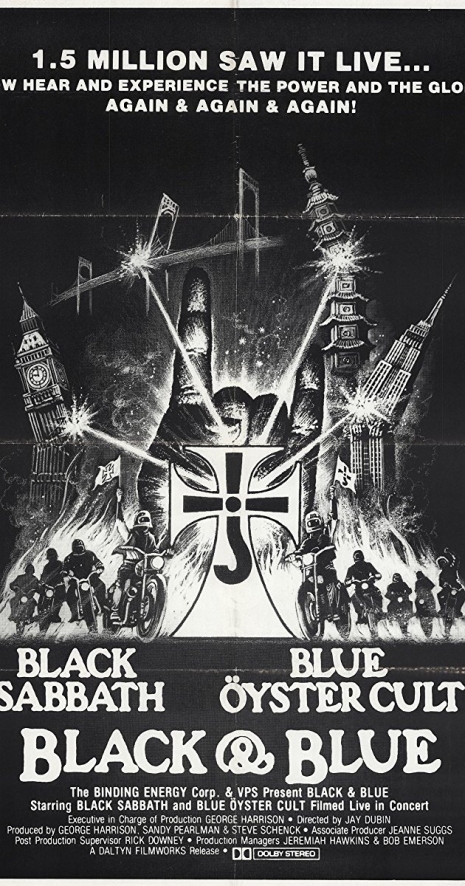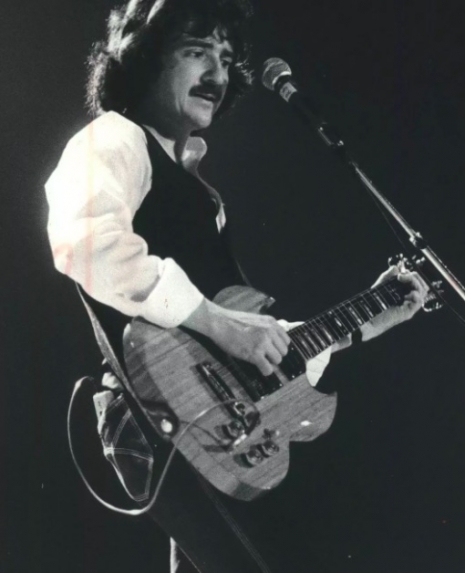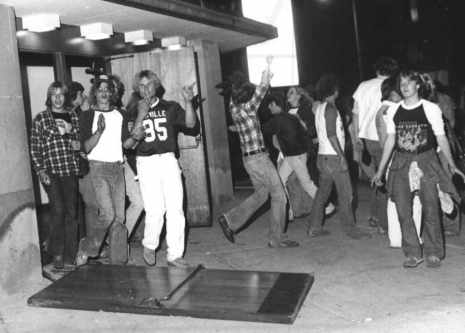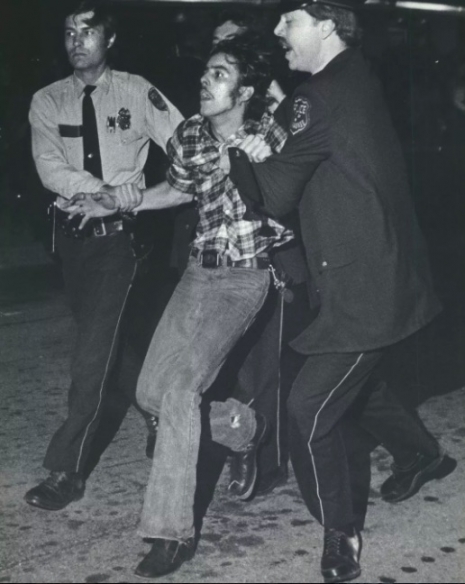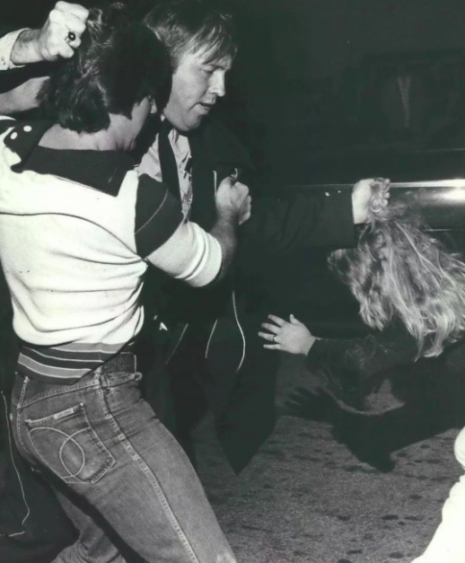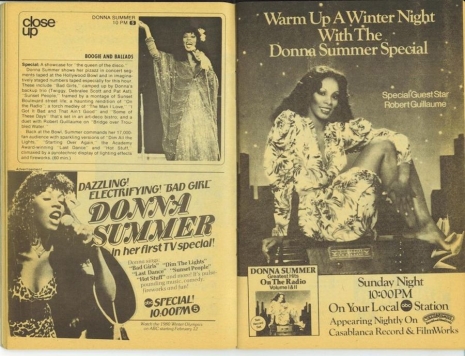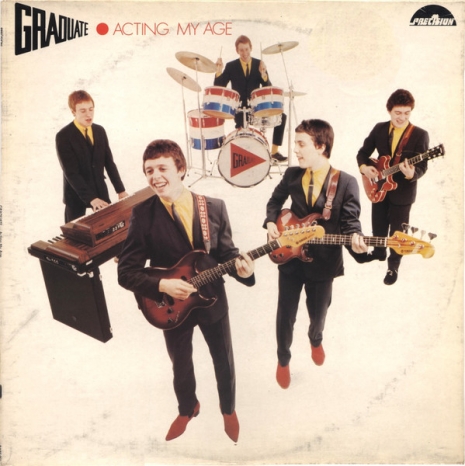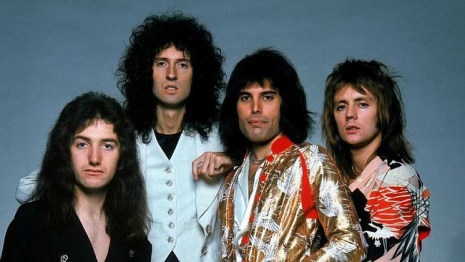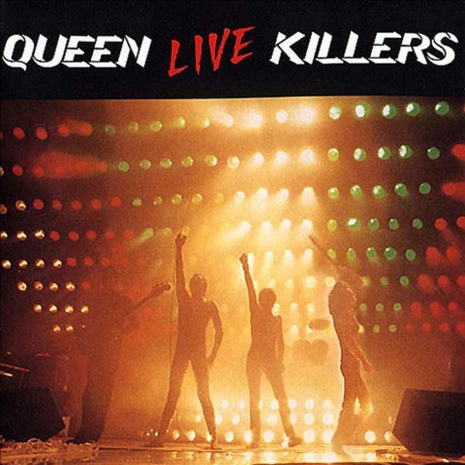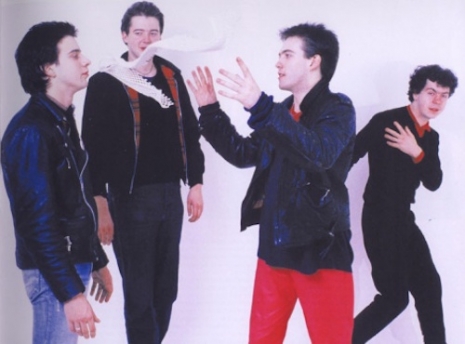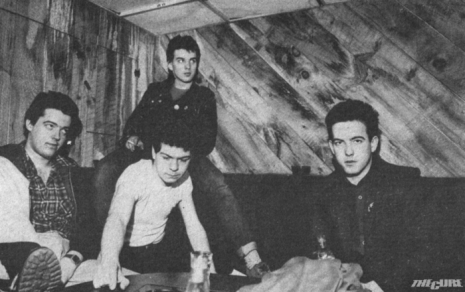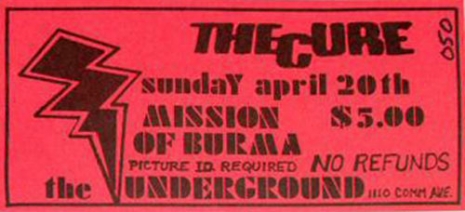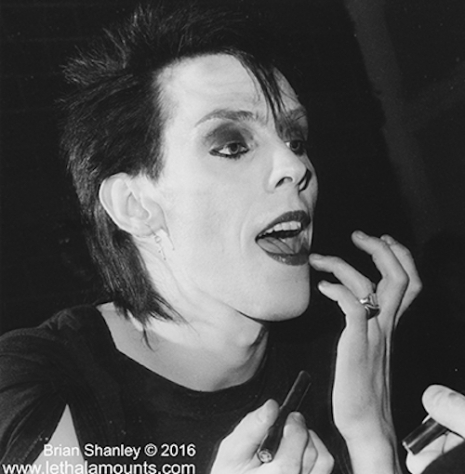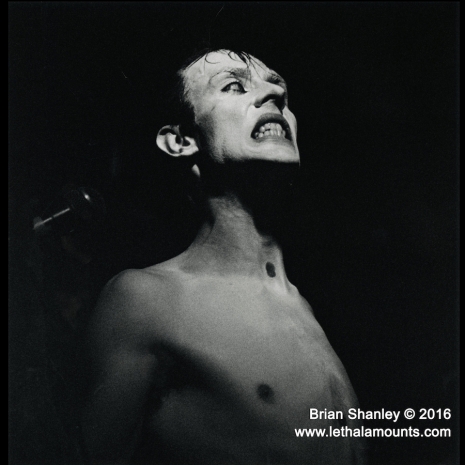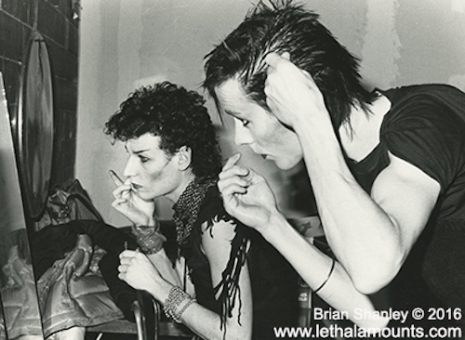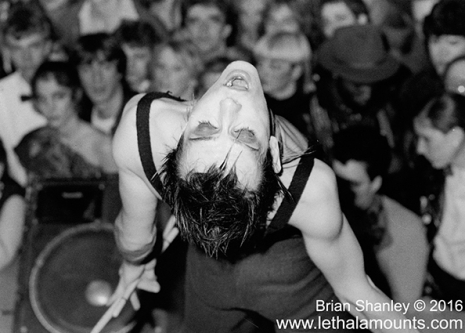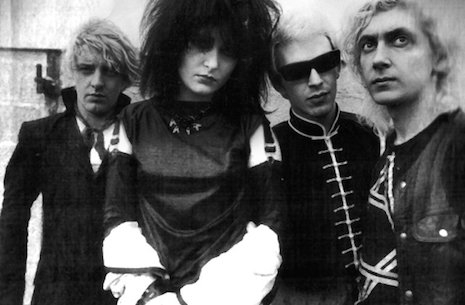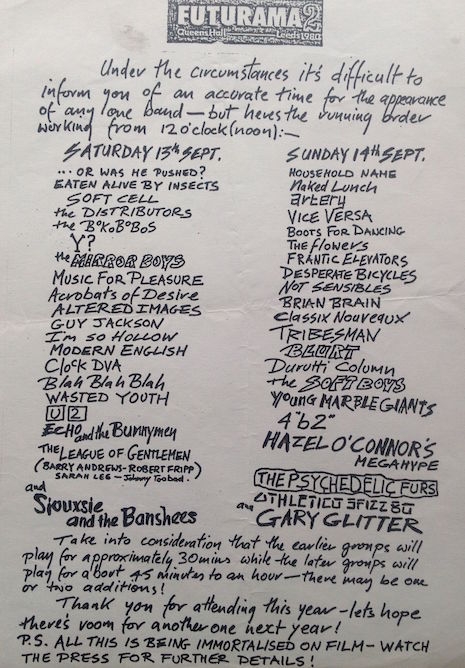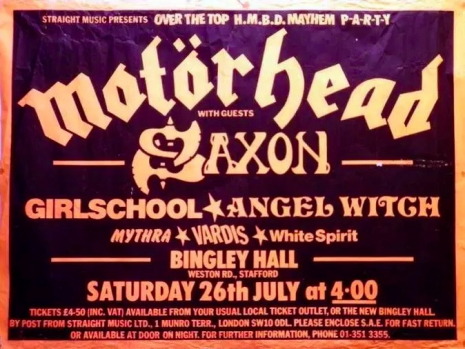
A show poster for Motörhead’s headlining gig at Bingley Hall in Stafford, England on July 26th, 1980.
At the age of sixteen, Lemmy Kilmister saw the Beatles perform in Liverpool. This event would play a considerable role in Kilmister’s desire to pursue a career in music. Of course, the image of girls frantically throwing themselves at John, Paul, George, and Ringo (as young Lemmy undoubtedly witnessed firsthand) probably didn’t hurt either. While I’d like nothing better than to keep talking about Lemmy’s early days, nobody has done that better than Lemmy himself in his 2002 autobiography White Line Fever. Let’s jump forward to the glorious year of 1980, so we might pinpoint the reason Lemmy passed out backstage at Bingley Hall in Stafford, England on July 26th, 1980—allegedly for receiving one too many blowjobs from amorous female fans before the show.
During 1980, Motörhead would, among other things, become known for trashing their hotel rooms. Drummer Phil “Philthy Animal” Taylor enjoyed a good hotel room thrashing and broke his hand on more than one occasion teaching random hotel rooms a lesson. In fact, Taylor’s time with Motörhead was full of broken bones. On another occasion that same year (following a show in Belfast, Ireland), an obliterated Phil was hoisted into the air by an equally obliterated, and very large, Irish fan. Taylor’s new pal was so drunk that after he lifted Taylor into the air, he moved back to see how high he had lifted the Motörhead drummer. Gravity did its thing, and Phil ended up with a broken neck. Just before the release of their fourth album, Ace of Spades, Motörhead headlined a gig at Bingley Hall with Angel Witch, Mythra, Vardis, White Spirit and approximately 10,000 highly intoxicated fans. At this point, Lemmy had been on a strict 72-hour regimen of sex, drugs, booze, and no sleep. When it was time to play Bingley Hall Lemmy was such a mess that guitarist “Fast” Eddie Clarke, an epic connoisseur of vice in his own right, told Kilmister that he was “drinking too much.”
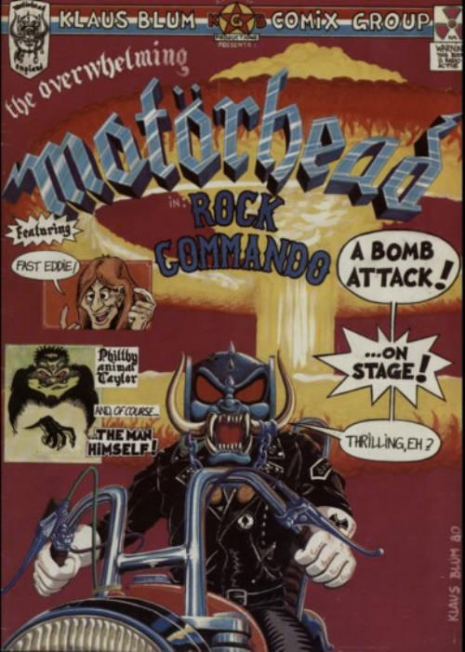
The cover of the very rare collectible “The Overwhelming Motörhead in Rock Commando” written by Klaus Blum and distributed at the Bingley Hall gig.
After going full-gonzo for three days, Lemmy made it to the stage and, for a change, Clark and Taylor were relatively sober despite the excessive amount of cocaine blowing around backstage. According to Lemmy, after leaving the stage prior to the band’s encore, he collapsed and had to be revived. Clark and Phil were pissed at the seemingly indestructible Kilmister calling him a “motherfucker” because they were suddenly concerned about how the incident would affect their careers. Ultimately, (and since this is Lemmy Kilmister), he would return to the stage and finish the encore. Though it remains somewhat unclear how many people witnessed Lemmy’s collapse, the band was concerned enough about the incident that Lemmy chose to downplay his unplanned backstage nap, blaming it instead on three blowjobs he received prior to the show.
Here’s more from Lemmy on that (from White Line Fever):
“After the gig, I told the papers that I’d collapsed because I’d had three blow jobs that afternoon. The part about getting the blowjobs was true, actually. There were chicks all over the place, and there was this really cute Indian bird—she was two of them. There was this room in the hall that was full of cushions and shawls hanging down. It was like some Maltese fucking dream. So I locked myself in there with her and wouldn’t come out.”
So, according to Lemmy, it wasn’t three days’ worth of Lemmy-sized booze, drugs, and sex that caused his collapse at Bingley Hall, it was too many blowjobs! So my friends, the next time “Steak and a Blowjob Day” rolls around, don’t be like Lemmy (it’s impossible anyway) and know your fellatio limits. Footage of Motörhead performing their 1977 jam “Motorhead” live on German television in 1980 follows.
Motörhead live on German television performing “Motorhead” from their debut album of the same name. Kind of like Lemmy’s three-day binge, the band recorded the record in two-days fueled by speed and no sleep.
Previously on Dangerous Minds:
Lemmy Kilmister gets ambushed by three of his ex’s on TV in the late 90s
Motörhead trash a hotel room
Wild early UFO footage featuring Larry Wallis from Pink Fairies and Motörhead
Oral: The mysterious all-girl heavy metal band and their (maybe) connection to Lemmy Kilmister







